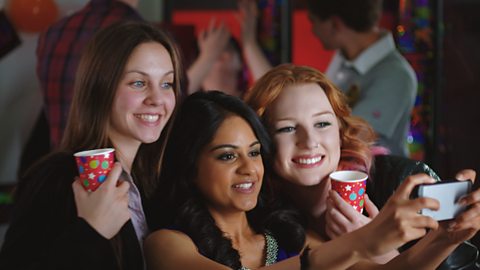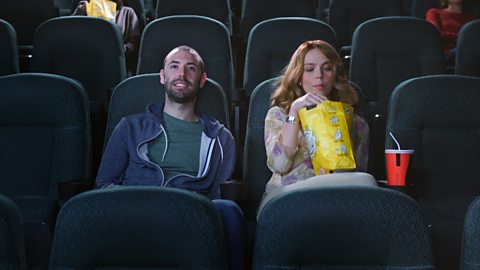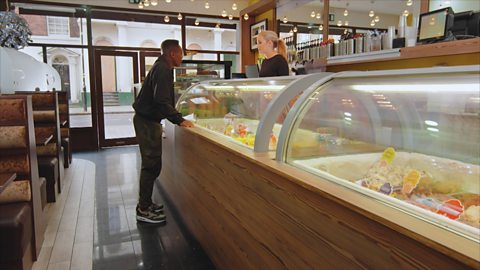SANJEET GUPTA:Hello, I'm Sanjeet Gupta with your weather update.
SANJEET GUPTA:Not a very exciting week of weather ahead of us, it's a bright start to the morning, but it's not to last.
SANJEET GUPTA:As we head through the next 24 hours, there will be a mix of sunshine and showers. And with strong winds across the English Channel, it will be feeling cooler in the South.
SANJEET GUPTA:Scotland, Northern Ireland, it's a better day for you, with highs of 18, and further east, it will be drier with clear skies.
SANJEET GUPTA:So, what's the probability of it raining today?
SANJEET GUPTA:Well, the probability of an outcome can have any value between zero, which is impossible, and one, which is certain to occur.
SANJEET GUPTA:This could be a fraction, decimal, or percentage.
SANJEET GUPTA:Last year, it rained 12 days out of the 31 days of July. So the relative frequency for the number of days of rainfall is the number of times this outcome occurs, which is the rainfall, divided by the total number of outcomes, which is the total number of days.
SANJEET GUPTA:So, the estimated probability of rainfall this month is 12 over 31, which equals 0.39 which, on our probability scale, is Not Likely.
SANJEET GUPTA:So what's the probability of it not raining? Well, all probabilities must add up to one. So we subtract 0.39 from one, which equals 0.61. Which, on our probability scale, is Likely.
SANJEET GUPTA:But, as it's the UK, our summer came and went last week. So if you're out and about, I'd take a brolly with you, as it's probably going to rain.
UNKNOWN MALE #1:Fingers crossed for tomorrow, then.
UNKNOWN MALE #2:I know, yep.
UNKNOWN MALE #1:Yeah.
UNKNOWN MALE #3:Help yourself, guys. Have one.
UNKNOWN MALE #1:'Why would you ruin a chocolate by putting lemon in it? And Turkish delight, there's just no need for that.
UNKNOWN MALE #1:'They're both going to take one before me, so the probability of my choice is conditional, as it is dependent on the previous outcome. Conditional probabilities can be represented with a tree diagram.
UNKNOWN MALE #1:'There are five chocolates in total, three I like, and two that I dislike. To calculate the probabilities, I multiply along the branches for the outcome.
UNKNOWN MALE #1:'And the sum of the probabilities of any set of branches will always be one.
UNKNOWN MALE #1:'So the probability that they both take a chocolate that I like will be three over five multiplied by two over four, which equals three over ten.
UNKNOWN MALE #1:'The probability of one person taking a chocolate I like, and the other taking one I dislike, has more than one possibility. So I have to multiply along the branches to find each probability and then add the outcomes together.
UNKNOWN MALE #1:'So three over five multiplied by two over four, plus two over five multiplied by three over four, equals six over 20, plus six over 20, which equals 12 over 20, which can be simplified to three over five.
UNKNOWN MALE #1:'That's OK. There's still two left.'
UNKNOWN MALE #2:Mmm. That's alright, that is.
UNKNOWN MALE #1:'What the heck? He said take one! Oh, we are no longer friends.'
UNKNOWN MALE #3:Have one.
UNKNOWN MALE #1:No thanks, I'm good.
UNKNOWN MALE #3:Don't be silly. Take one.
UNKNOWN MALE #1:'Terrible every time. Every time.'
UNKNOWN MALE #3:There's only one left, you might as well finish the box.
Video summary
This short film uses weather as an example to reflect how the concept of probability is used and applied.
The presenter describes the frequency of a weather event occurring and the fact that probabilities add up to 1.
So if we know the probability of an event occurring, then by subtracting from 1, we can calculate the probability of the event NOT occurring.
The video progresses on to show a structured way of calculating multiple events by using a ‘Tree Diagram’.
This is from the series: Real Life Maths
Teacher Notes
The video clip could be used in a variety of ways to support learning. Teachers could play the video in class and the learners fill in a worksheet based on the video, followed by exam questions.
Learners in pairs rate each scenario on a probability scale by using words such as impossible, even chance more/less likely and certain.
The video can be used to reinforce and establish key skills as part of a carousel lesson where students in groups of 3 or less depending on class numbers rotate and answer key questions based on the video clip.
The video could also be used as a peg to investigating probability in a casino for example, to work out chances of winning/losing. To calculate fairness in gaming.
This clip will be relevant for teaching Maths at KS3/GCSE in England Wales and Northern Ireland. Also at National 4, 5 and Higher in Scotland.
This topic appears in OCR, Edexcel, AQA, WJEC in England and Wales, CCEA GCSE in Northern Ireland and SQA in Scotland.
Ratio and Proportion. video
A cake company demonstrates how ratios and proportions are used to complete an order.

Percentages. video
Clothes shopping and video statistics are used to explain percentages.

Algebra. video
A mobile phone deal and a trip to the cinema are used to explain algebra.

Sequences. video
The purchasing of cupcakes is used to explain linear and quadratic sequences.

Pythagoras. video
Cleaning a window and installing a TV are used to explain the theory of Pythagoras.

Trigonometry. video
A hiker trying to work out the height and distance he's walked uses trigonometry.

Fractions. video
A group of friends sharing a meal is used to explain fractions.

Geometry. video
A clothes designer trying to make an outfit uses geometry.

Finance. video
A man buying a car uses financial planning and investment to work out how much he'll pay.
